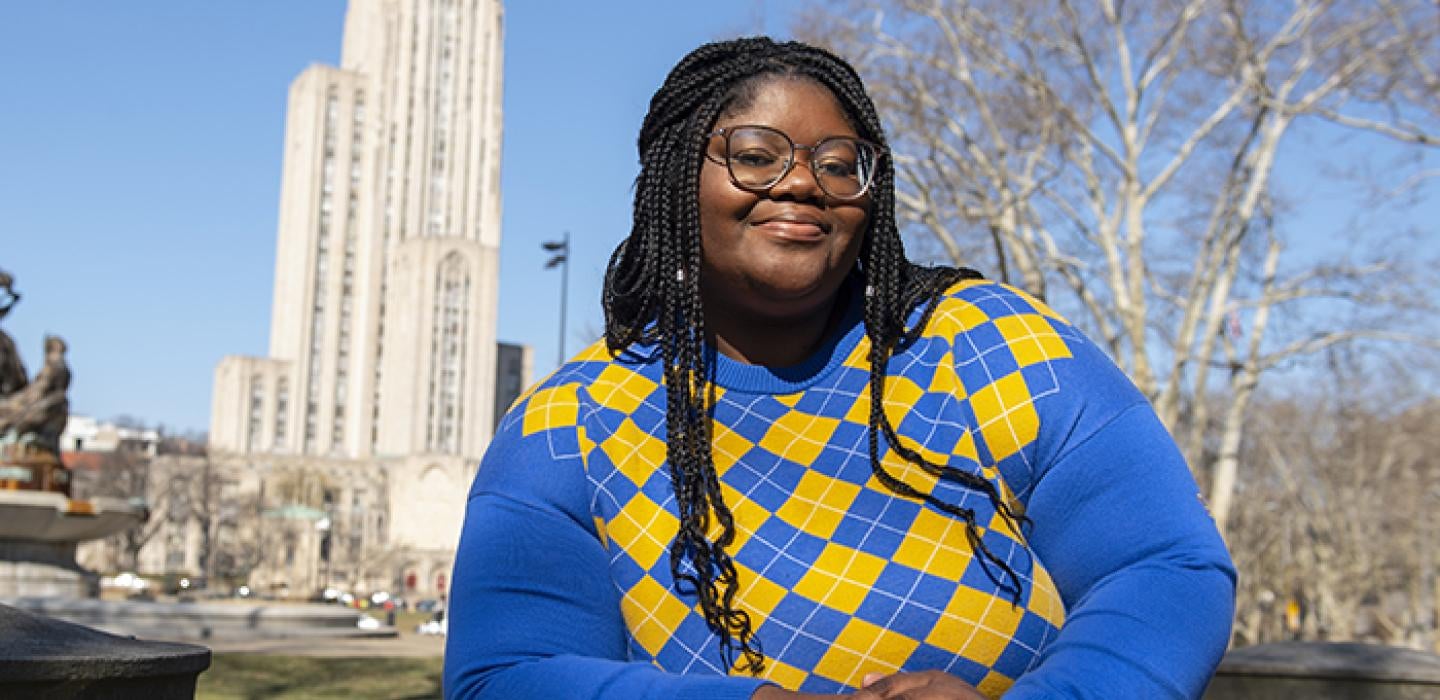
Subscribe to Pittwire Today
Get the most interesting and important stories from the University of Pittsburgh.The University is set to debut a project that spotlights the Black experience at Pitt.
The Blue, Gold and Black Digital Archive — a website and tool from the University of Pittsburgh Library System (ULS),the Office for Equity, Diversity, and Inclusion, the Black Action Society (BAS), the African American Alumni Council and the Equipoise Staff Subcommittee — aims to uplift the memories and histories of Black students, faculty and staff at Pitt by sharing photographs and stories that detail their experiences and making them a permanent part of the collection.
The yearlong effort will debut Feb. 21 at 6 p.m. as part of the Blue, Gold and Black Experience Gallery and the University's K. Leroy Irvis Black History Month Program.
"I was interested in this project because I'd done something similar before and because it's connected to Black students and their experiences on campus," said Haliyat Oshodi, a New Jersey native, public health major and student-worker on the effort. “I definitely wanted to be a part of that.”
Oshodi is helping ULS archivists choose materials for the platform. She spends time each week reviewing documents, selecting photos and text for the website, gathering input from the team and writing descriptions of the content, which is then published.
“Haliyat is our hired, dedicated student, and I think that’s important,” said Edward A. Galloway, an associate University librarian for Archives and Special Collections who is leading the project with Jeffrey Wisniewski, director of communication and web services for the Hillman Library's management team.
"The platform isn't only meant for African Americans — it's for anybody," said Galloway. "But the point is to capture the Black experience at Pitt. We're trying to build a place where these stories can be communicated and permanently held. We have websites devoted to documenting University history overall. Some pieces speak to the Black experience, but they're not front and center. We're trying to be strategic and get the communities to tell their story."
[Register to attend the unveiling of the archive.]
"I want to focus on epidemiology and health disparities within the Black community and among people in color," said sophomore Oshodi, citing the field's dire need for more diversity. From her perspective, enabling Black students to see themselves reflected and their stories uplifted is a small but necessary step in tackling health disparities — specifically mental health challenges some may experience on a college campus.
"This is a predominantly white institution," said Oshodi. "Seeing yourself or someone that looks like you can definitely help. That's why what we're doing is so important, and why it's important to highlight the experiences and contributions of Black people. Being a person of color in America, all the things that we've been through — one can look at the archives and see how many Black students went through a lot of these same problems and overcame them in the end. Seeing those experiences and how they went through many complexities and were still successful can definitely help one's mental health and probably give them motivation."
Oshodi shared her hope for tonight’s unveiling — that people remain open to seeing history from someone else's perspective.
"A lot of people will be learning more — and new — information during the unveiling. Since people can upload different documents or stories, we will be able to get different perspectives, not just the newspaper clippings."
She said her most significant takeaway while working on the archive is the impact past Pitt students have had on her in the present.
"Black students did so much for this University, and their past contributions paved the way for us, future Black students, giving us a better experience," said Oshodi. "Being a part of history like this, I'm really proud. The Black experience throughout the years weren’t always good, but we did overcome."
— Kara Henderson


